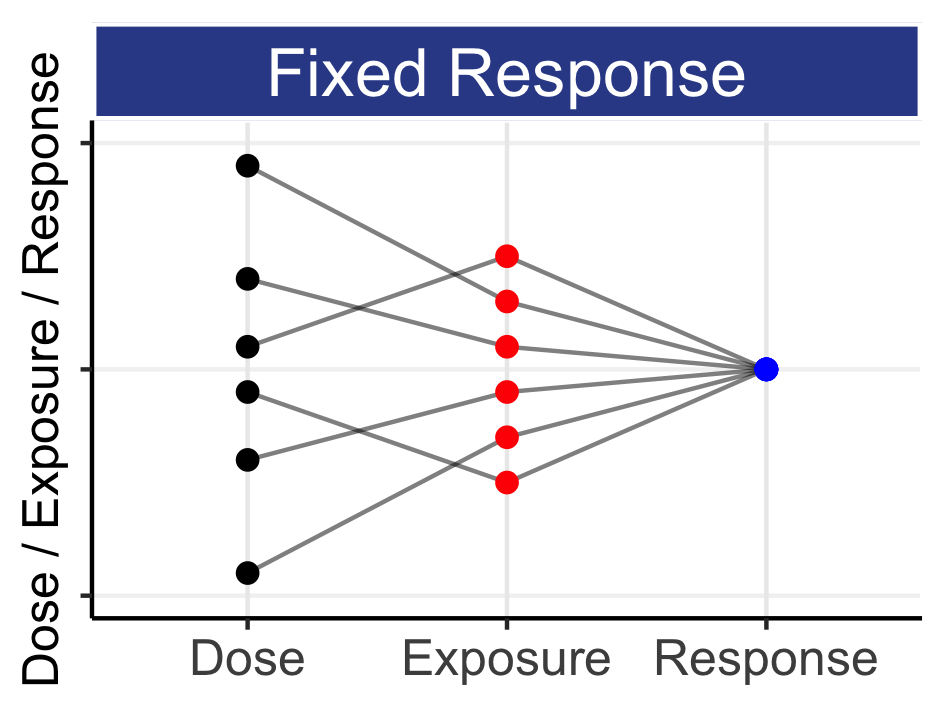1 Introduction
This book aims to explain why we need to put individual patient outcomes at the centre of drug development and regulatory approval. To achieve this, we need to fully recognise heterogeneity between patients, and the central role played by dose.
Drug development is about solving a puzzle. We have patients, and we have a drug.
Our goal is to work out how best to treat each and every patient using the drug.
Stated more mathematically, this is an optimisation problem, where we aim to maximise the outcomes for patients using the drug optimally. With this goal, all clinical trials in the development of a drug should be focussed on efficiently and quickly solving this puzzle.
Higher doses will, in most cases, lead to greater effects that can be both positive (efficacy) and negative (tolerability/safety) for the patient. As noted by Paracelsus in 1538:
“Only the dose makes the poison”
We must therefore determine how best to balance these opposing effects. Too low a dose, and the patient will not benefit as much as they could; too high a dose, and the patient will experience unnecessarily severe tolerability/safety issues. Crucially, these dose-response relationships, and hence the optimal dose, will differ between our heterogeneous patients. Whilst the best dose for Emma may be 10 mg, for Casper it may be 100 mg.
Drug development is, and always will be, a scientific learning exercise. Regulatory approval should be based on understanding both Population and Individual dose-response (D-R) relationships across multiple efficacy and tolerability/safety endpoints, using the totality of the accrued data from all trials. With a science-based dose titration algorithm, we can achieve the best dose for each and every patient; we can truly deliver Personalised Dosing.
The current way we develop drugs is painfully crude and does not achieve our goal. Consequently, far too many patients are given the wrong dose for them.
This book will explain the main problems, and propose solutions. Broadly speaking, the solutions fall into 5 primary themes:
Understanding the goal
Understanding the science
Understanding dose-response models/modelling
Changes needed within the regulatory agencies
Changes needed within the pharmaceutical industry
Despite the good intentions of all involved (myself included), we must recognise that the current “status quo” is wholly unacceptable for modern drug development; we can, and should, do so much better. Rather than seek to blame anyone or anything, we must simply acknowledge what is truly important, and then quickly move forward in a more scientific manner, where optimising patient outcomes is central to everything we do.
The above themes will appear throughout the book. Although it is important to discuss some of the current problems and causes of why we are where we are, this book aims to be more inspirational, and to say where we should be. As an analogy, rather than “patch up” an old derelict house with antiquated infrastructure, we can design a brand new house, using modern science and technology. If we could redesign drug development from the “floor up” with modern, patient-centric, scientifically designed and analysed drug programs, what would they look like? Can we be brave, and swiftly move to an approach that is truly better for patients?
In parts, the text will be pointed and unapologetically direct. I prefer directness, even if it may be harsh; I hope it is never construed as arrogant, rude or condescending. I do not aim to offend anyone, but my anger and frustration at drug development programs that are not “patient-centric” is genuine. If we truly focus on individual patient outcomes, I honestly believe we can do so much better for patients.
I hope this introduction is appealing to people with an interest in drug development and improving patient outcomes, including regulatory agencies, the pharmaceutical industry, patients/patient advocacy groups and payers, and that you will continue reading to find out more 😀.
Note: you can use the “back” button in your browser to return from a hyperlink, and can find all abbreviations defined in the Glossary.
